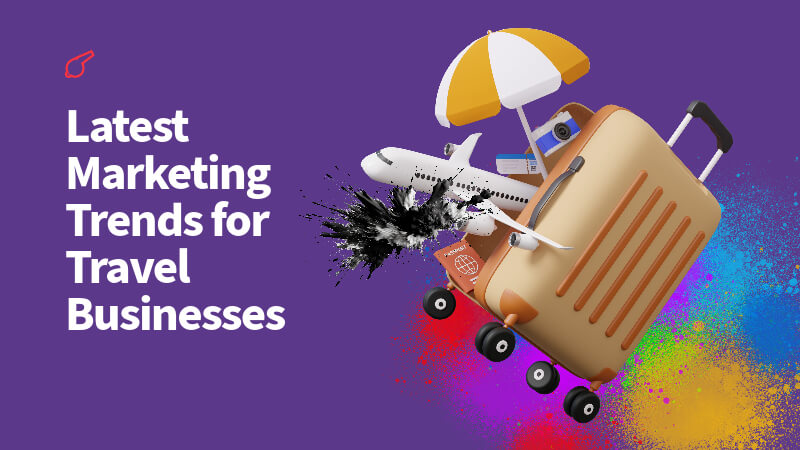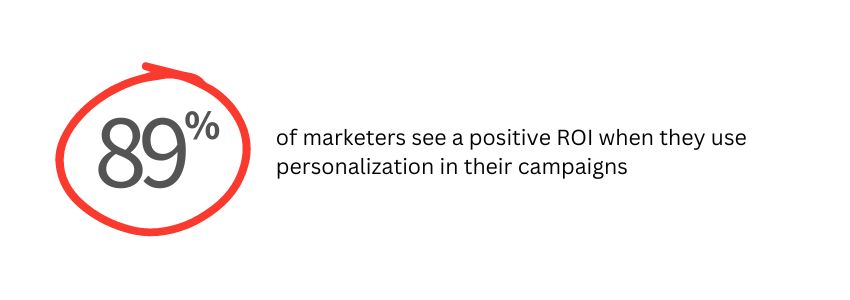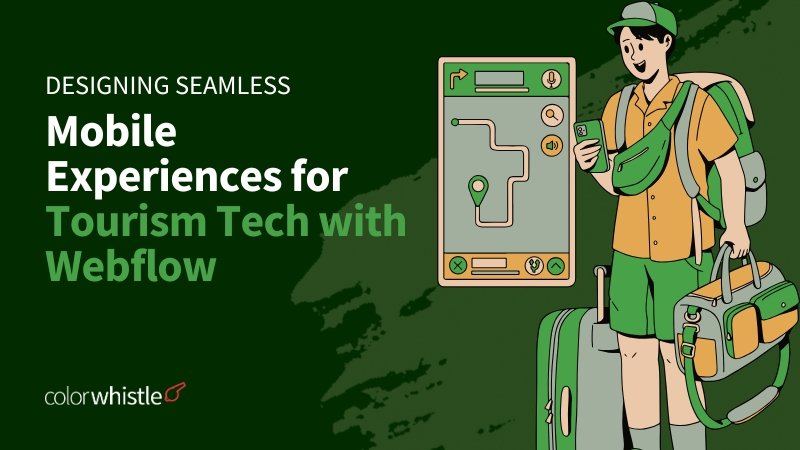The travel marketing industry in 2025 is experiencing a dynamic shift, propelled by advancements in technology and the evolving preferences of consumers. As travel businesses strive to capture the attention of digitally-savvy travelers, the need to adapt and innovate has never been more critical.
From leveraging artificial intelligence for personalized experiences to integrating sustainable travel initiatives, the latest marketing trends are reshaping how travel companies connect with their audiences. For a travel website development company, staying ahead of these trends is not just a strategic advantage—it’s essential for maintaining relevance and driving growth in a competitive market.
Understanding the top marketing trends shaping travel businesses can provide a significant edge, allowing companies to craft more engaging, tailored, and effective campaigns. By embracing these emerging trends, travel businesses can enhance their brand presence, build stronger customer relationships, and ultimately, boost their bottom line.
Whether through cutting-edge digital strategies or a renewed focus on customer-centric approaches, investing in the right travel website development services ensures that travel companies can meet the evolving expectations of today’s travelers, setting the stage for a successful 2025 and beyond.
Did You Know?
The Travel & Tourism market worldwide is projected to grow by 3.99% (2024-2029) resulting in a market volume of US$1114.00bn in 2029.
Top Travel Marketing Trends For Travel Companies
Personalization and Hyper-Personalization
1. How Data Analytics And Machine Learning Enable Customized Experiences
Personalization remains a cornerstone of effective travel marketing, and in 2025, it’s evolving into hyper-personalization, where data analytics and machine learning play pivotal roles. By analyzing user behavior, preferences, and real-time data, travel businesses can create highly customized experiences that resonate with individual travelers.
This approach goes beyond generic marketing messages, offering tailored recommendations, personalized content, and bespoke travel packages that align with each customer’s unique desires and travel habits. For a travel website development company, integrating these personalized features into digital platforms can significantly enhance user engagement and satisfaction.
2. Implementing Dynamic Pricing Models And Targeted Promotions
Dynamic pricing models and targeted promotions are also becoming increasingly sophisticated, allowing travel businesses to offer the right price at the right time to the right customer. By utilizing machine learning algorithms, companies can adjust prices based on demand, booking windows, and customer segments, maximizing revenue while delivering value.
This level of personalization not only boosts conversion rates but also fosters long-term loyalty, as customers feel understood and valued. As technology advances, personalization—and hyper-personalization—will remain a timeless trend, consistently proving that a personalized approach is not just a fleeting strategy but a lasting key to success in travel marketing.
Did You Know?
71% of consumers expect companies to deliver personalized interactions Source
Immersive Technologies: Virtual Reality, Augmented Reality, and Mixed Reality
Immersive technologies like Virtual Reality (VR), Augmented Reality (AR), and Mixed Reality (MR) are revolutionizing travel marketing, offering potential travelers a chance to explore destinations before they even book a trip.
By providing virtual tours of hotels, landmarks, and experiences, VR allows users to step into a different world, making travel more tangible and exciting right from their screens. AR enhances this by overlaying digital information onto real-world views, like interactive maps or virtual guides, enriching travel planning with engaging, interactive elements.
Mixed Reality combines the best of both worlds, merging the virtual and physical realms to create dynamic, immersive experiences that captivate and inspire. Incorporating these technologies into marketing strategies for travel companies can significantly boost customer engagement, as they offer a memorable, first-hand glimpse of what awaits.
By bringing destinations to life in this way, immersive technologies not only elevate the customer experience but also drive bookings, making them a compelling and forward-thinking trend in travel marketing.
Also Read
Metaverse and Digital Twins
1. Metaverse and Travel
Metaverses represent collective virtual shared spaces, merging physically persistent VR with virtually enhanced physical reality. They allow users to explore destinations, attend events, and socialize online. Users benefit from experiencing different cultures and activities without leaving home. Businesses gain opportunities to connect with global audiences, expand reach, and generate interest in their offerings.
Example: Coachellaverse – Coachella’s immersive metaverse concert experience
Coachella has made its Coachellaverse digital experience accessible, allowing live performances to be streamed for those unable to attend in person. The virtual space features augmented reality, interactive participation, game mode, and NFTs linked to music products, providing an immersive experience for attendees worldwide.
2. Marketing in Metaverses
Companies utilize metaverses for promotional efforts due to their ability to facilitate engaging interactions between brands and customers. Marketers craft captivating narratives using immersive storytelling techniques, enabling prospects to develop familiarity with products before purchase. Examples include virtual tours, demos, contests, and gamified experiences designed specifically for target audiences. Such strategies help increase consumer awareness, build excitement, and establish lasting relationships.
Example: AR-Powered Virtual Tours – Disney Parks by Freethink
Disney Parks utilizes AR technology to craft immersive experiences, offering interactive games, scavenger hunts, and virtual character meet-and-greets. These innovations heighten the enchantment and excitement of the parks, bringing the magic to life in new, engaging ways.
3. Digital Twins for Experiential Marketing
Digital twins generate precise 3D representations of actual locations and integrate sensor data to mimic environmental conditions accurately. In travel and tourism, digital twins give true-to-life glimpses of destinations and attractions. Utilizing AR technologies adds layers of informative and entertaining material to enhance visitor comprehension and enjoyment. Resultantly, businesses cultivate deeper emotional bonds among patrons, boosting both affinity and sales.
Also Read
Web3, Blockchain, and Decentralized Finance
1. Role of Blockchain in Transactions
Blockchain is a decentralized ledger system that ensures transparency, security, and immutability in recording transactions across multiple devices simultaneously. Its distributed consensus mechanism verifies every transaction, preventing fraudulent activity while maintaining privacy. As a result, trust amongst participants increases significantly, streamlining processes and reducing costs associated with traditional intermediaries.
2. Cryptocurrency & NFT Payments
Cryptocurrencies, like Bitcoin and Ethereum, function as digital assets based on complex encryption algorithms. Acceptance as a payment method allows merchants to serve broader markets, including unbanked populations worldwide. Non-fungible tokens (NFTs), unique digital artifacts stored on blockchains, also hold value transfer capabilities. Integrating these alternative currencies provides flexibility for consumers seeking diverse options beyond conventional fiat money.
3. Smart Contract Applications
Smart contracts operate as self-executing agreements containing predefined rules encoded within them. Automatically executing when specific criteria are met, they eliminate third-party involvement and minimize risks related to manual errors. Furthermore, smart contracts encourage decentralized finance applications, including lending platforms, yield farming protocols, and insurance solutions, empowering individuals to control financial resources directly via transparent and accessible systems. Web3 infrastructure underpins these innovations, enhancing overall efficiency, accessibility, and autonomy throughout economic ecosystems.
Direct Bookings and Customer Loyalty Programs
1. Direct Engagement Between Providers & Consumers
Direct bookings refer to reservations made directly with travel suppliers—such as hotels, airlines, or cruise lines—rather than through intermediary channels like online travel agents (OTAs). Benefits include lower distribution costs, higher margins, more significant control over inventory management, and greater guest insight. Additionally, direct engagement nurtures personal relationships, increasing satisfaction and fostering long-term loyalty.
2. Innovative Loyalty Programs
Successful loyalty programs focus on delivering exceptional value, recognition, and rewards tailored to individual preferences. Implementing tiered structures offers escalating benefits tied to milestones achieved, encouraging repeat business. Personalized perks may range from exclusive discounts, priority check-in, room upgrades, complimentary amenities, or experiential bonuses aligned with guests’ interests. Strategically leveraging partnerships amplify program appeal and relevance, solidifying customer retention rates.
3. Competitive Pricing vs Profitability & Sustainability
Striking an optimal balance between attractive pricing, sustainable profits, and responsible operations remains critical for travel providers. Dynamic pricing strategies adjust rates dynamically based on demand patterns, competitor actions, seasonality, and market trends. Adopting cost-effective practices minimizes overhead expenses, improving bottom-line performance. Evaluating ancillary revenue streams broadens income diversification, bolstering resilience against external shocks. Ultimately, striking this equilibrium strengthens financial health, ensures longevity, and fortifies consumer confidence in service quality and reliability.
Also Read
Sustainable and Regenerative Tourism Practices
1. Eco-friendly Policies & Initiatives
Environmentally conscious organizations adopt sustainable measures aimed at protecting natural habitats, conserving biodiversity, and mitigating climate change impacts. Responsibly managing finite resources wisely guides strategic decisions affecting destination stewardship, community development, and socioeconomic prosperity. Consequently, ecolodges, nature reserves, and wildlife sanctuaries thrive amid diminishing carbon footprints, promoting regenerative cycles benefiting all stakeholders involved.
Example – Sustainable Transport On the Water By Soel Yachts
Water-based transport has been slower to adopt sustainable practices compared to other sectors, still largely dependent on fossil fuels. However, companies like Soel Yachts and Naval DC are leading the way with solar-powered electric vessels that are carbon neutral. As this trend grows, water transport is set to become significantly more sustainable.
Example – Self-Sustainable ‘Azurmendi’ Restaurant – Spain
Azurmendi, a three-Michelin-starred restaurant in Bilbao, Spain, stands out not only for its culinary excellence but also for its commitment to sustainability. The restaurant is powered by geothermal and solar energy, grows its own vegetables, and turns organic waste into compost for local farmers, allowing visitors to enjoy a world-class meal while supporting sustainable tourism.
2. Local Economy Booster
Proponents support regional economies by developing small enterprises that contribute positively to grassroots communities, circular supply chains, and fair trade principles. Emphasizing ethical sourcing standards elevates authenticity, improves livelihoods, and uplifts disadvantaged groups along the journey.
3. Ecotourism Advocacy
Championing soft adventure activities lessens adverse effects caused by mass tourism flows, fostering respectful encounters between hosts and visitors alike. Low-impact transportation modes reduce pollution levels whilst raising awareness about fragile ecosystems requiring protection. Thus, tourists enjoy meaningful exchanges appreciating intrinsic values embedded deep within pristine landscapes untouched by human intervention.
Wrapping Up
In 2025, staying on top of the top travel marketing trends is essential for travel businesses looking to remain competitive and relevant. From hyper-personalization to immersive technologies, these trends are shaping the future of customer engagement and brand loyalty. By incorporating these strategies and leveraging travel website development services, companies can offer more personalized, interactive, and memorable experiences, ensuring long-term growth and success in the dynamic travel industry.
Hop over to our ColorWhistle page to explore the latest in travel web development services. Need a personal touch? Feel free to send us a message or give us a call at +1 (919) 234-5140, and we’ll get back to you shortly.
What’s Next?
Now that you’ve had the chance to explore our blog, it’s time to take the next step and see what opportunities await!








